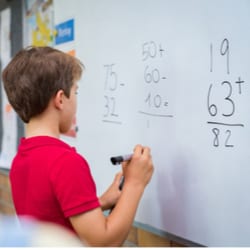Key elements of Differentiated teaching
- High quality, evidence based group instruction
- Regular supplemental instruction
- Individualised interventions
Effective educators use evidence of student learning readiness, learning progress, and knowledge of individual student learning profiles to make adjustments for individuals so all learners experience challenge, success and improved learning.
What is possible?
Educators use various formative assessment strategies and their knowledge of each learner to inform evidence-based modifications to content and practice.
This dynamic process requires the educator to accurately identify current learning and to make informed decisions to either intervene, challenge, scaffold or redirect the learning.
By modelling that there are many ways to be successful and by supporting different ways of achieving a learning outcome, educators’ value and support learners as they build confidence and seek to make sense of their learning.
For learners, the numeracy environment supports them by providing different materials, audiences and opportunities to make their learning visible.
Opportunities may involve the use of manipulative materials, working with others, conducting an investigation, revisiting a situation to test a hypothesis, or describing their learning.


